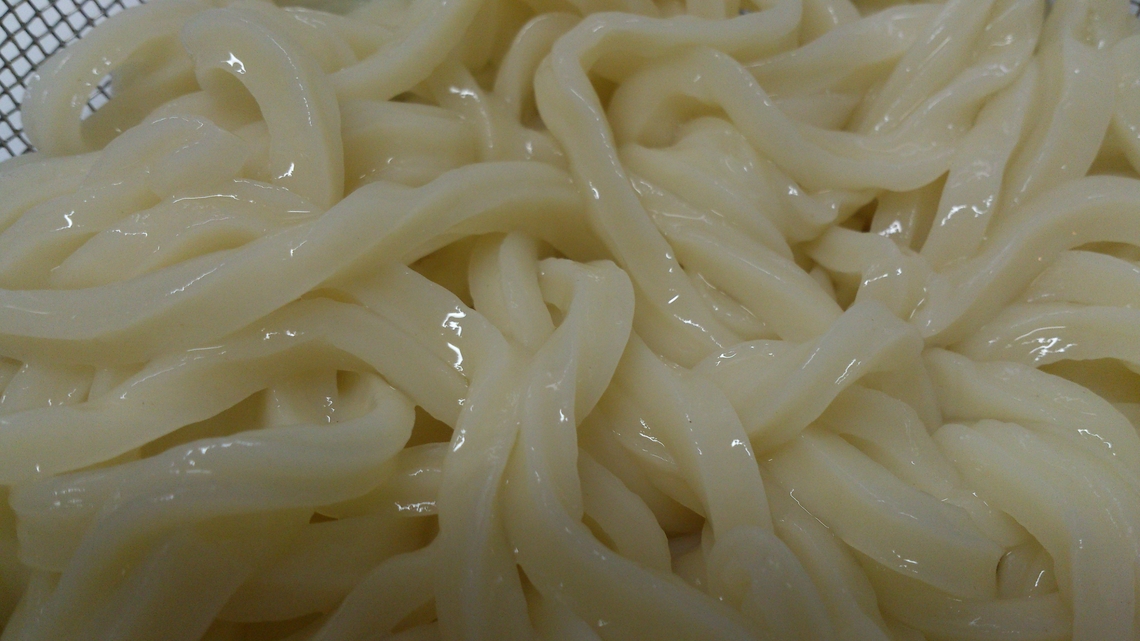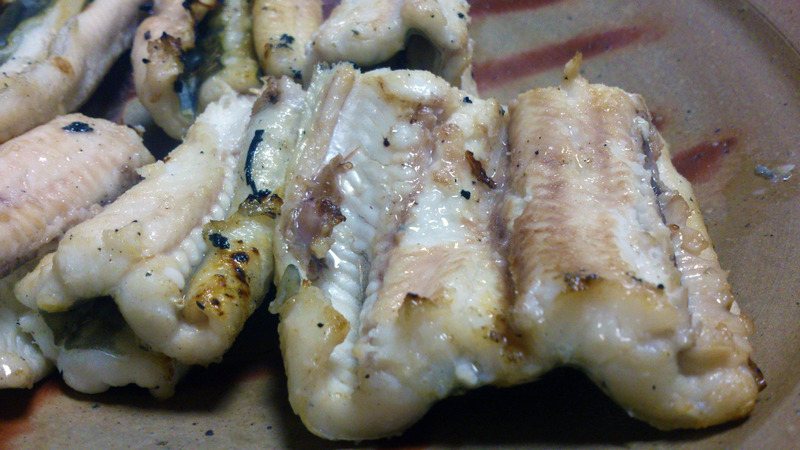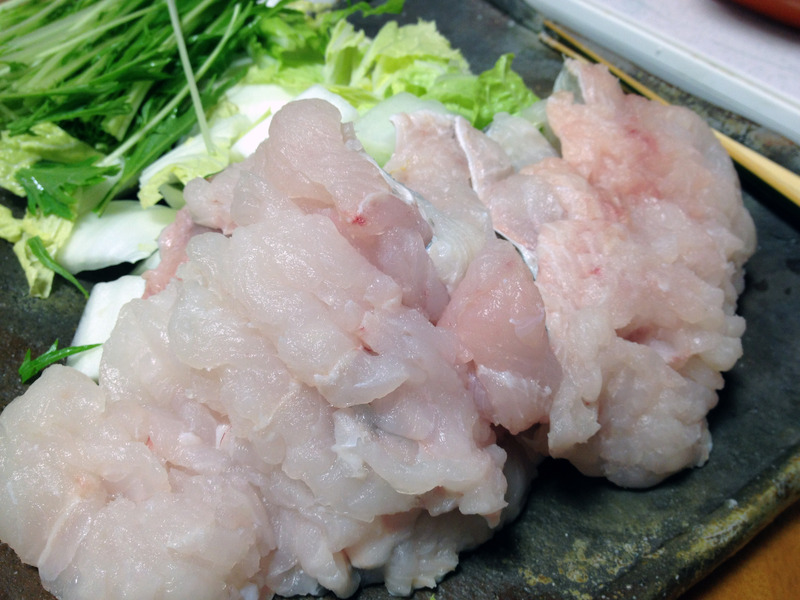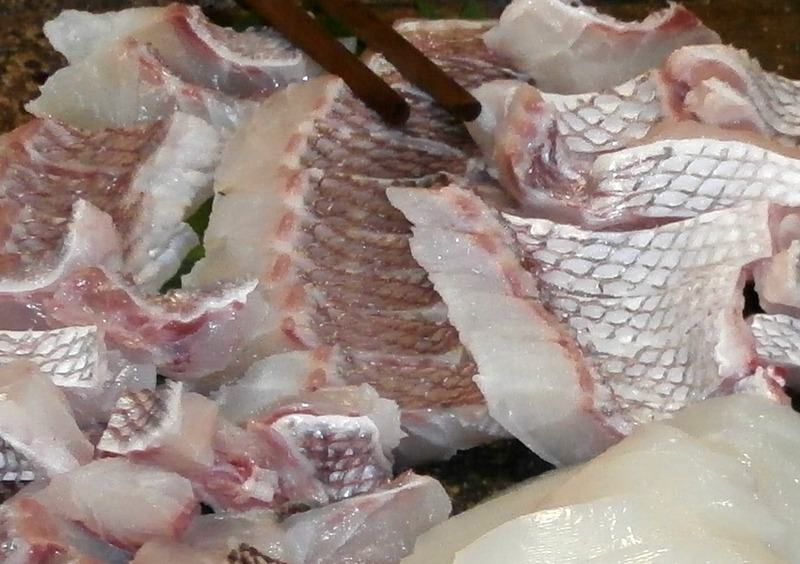The deliciousness of Akashi sea bream is universally acknowledged, requiring no further explanation. (omission) Only females weighing between 500 and 700 monme are suitable for sashimi. Furthermore, the section about two sun wide, extending from the anus toward the head, is particularly superior in flavor.
— Uotani Tsuneyoshi, 'The Delight of Taste'
Defeat, postwar, travel, spring, Akashi sea bream. A sudden awakening from the long suffering, sorrow, anxiety, and all manner of confusion of the war.
— Hamako Tatsumi, 'Cooking Through the Seasons'
Even among wild-caught fish, there are many varieties. The most desirable are the firm-fleshed red sea bream, raised in the rough currents of Akashi Strait and Naruto Channel, large enough to rest heavily in both hands. These are gradually disappearing from the Seto Inland Sea. (...) However, only this inland sea variety of red sea bream can truly bring out the authentic taste of the tide.
— Hiroyuki Agawa, "Food Flavors: A Record of Tastes"
When you want to stretch the wrinkles in your brain, head to Takamatsu. Start with a morning walk and Sanuki udon. If you're hungry, have three servings of udon with lotus root tempura. Play tennis at noon. As the sun sets, toast with local sake. The next morning, walk to cure your hangover and have Sanuki udon. Even a slight headache is perfectly cured with green onions, tempura crumbs, and shichimi pepper. Rain is scarce and the air is gentle. Repeat this for a few days, and both body and mind become relaxed and smooth.

Sanuki udon I found at 47CLUB Inc. Usually, the type sold as souvenirs is "semi-fresh," but this is "fresh noodles." It doesn't keep well, but it's delicious.
Among these, the most important is the evening drink snack. Takamatsu is a town so close to the sea that it has a culture called "itadakisan," where fishermen's wives pull carts through town selling fish. Grilled whole, the astonishingly thick conger eel, commonly called "Bessuke." Stir-fried mato clams. Depending on the season, hamo (sea pike-eel) can be surprisingly easy to buy, so the flesh is perfect for shabu-shabu, the innards for sautéing, and the bones for clear soup. The thick-fleshed hariika squid is meltingly sweet.

This is Bēsuke!
But the absolute crowning glory is the whitefish of the Seto Inland Sea. While not as famous as Akashi sea bream, the quality of fish caught in the same sea is truly guaranteed. The sea bream I had my local fishmonger select for me—the skin side blanched for a pine-bark style sashimi, the bones grilled, the roe simmered... Ah!
Just thinking about it makes my mouth water.
This Golden Week, while chatting with the fishmonger like this, he said, "For sashimi today, farmed is better than wild. It's a bit pricier, though."
I'd heard this before and always dismissed it. At best, I thought, "Sure, they say farmed fish are fattier, but wild-caught still has that authentic sea bream flavor, right? Farmed being more expensive? You must be joking!"
But this fishmonger's story was quite different. "Technology has advanced tremendously lately. The farmed sea bream from dedicated producers is incredibly high quality. It's nothing like the old days when they were stressed out in cramped pens. So it's not unusual at all for farmed fish to command higher prices than wild ones, depending on the season," he said. (He spoke in a thick Takamatsu dialect, but that was definitely the gist.)

Hamo was piled high for just over a thousand yen.
Because they live off the bounty of the sea, they feel both the limitations of "take-and-run fishing" and the necessity of engaging in "farming fisheries."
After hearing all this, I couldn't help but follow his recommendation and bought the farmed fish.
The sashimi was plump and firm, with a sweet aroma, and the local sake went down smoothly. No strange greasiness or fishy smell at all. The grilled fish head was moist too, and as I got tipsy, whether it was wild-caught or not became completely irrelevant.
The next morning. With a foggy, hungover head, I thought vaguely that "farming fisheries" is a new perspective. It's a concept that could spark innovation. The problem surely hinges on whether we can overcome consumers' preconception that "farmed fish is no good."

Farmed sea bream, shaved thinly. Even with an amateur's knife, it was delicious!
But Japan's fish-eating culture won't have a future if it's just "catch and discard." As long as we manage resources properly, there's no reason we can't eat wild fish. If the Akashi sea bream, so cherished by our ancestors, truly "disappears" from the Seto Inland Sea as Mr. Hiroyuki Agawa says, we won't be able to face future generations... But my head is pounding like crazy, so I'll just have plain udon today.
Here you go, enjoy!






